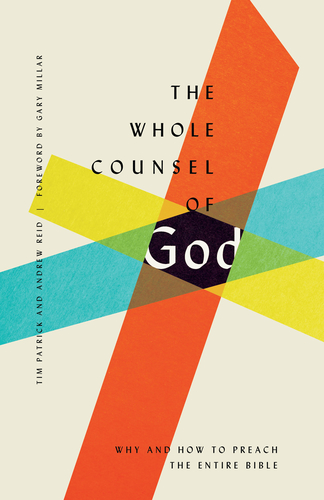Disclaimer: I am passionately from a topical preaching tradition, for those who are within a similar tradition, the usefulness of this book is reduced not removed and would have a three star rating. The four star rating is for those within an expository tradition or those evaluating the expository style for their ministry. Expository preaching in this review, refers to preaching that preaches verse by verse through books of the bible.
This is a great book, thoroughly practical and with some introductory material as well as references when they reach the edge of the scope for their book. Introductory material predominantly defines three types of theology and their application within preaching. Practical concerns pervade the book which can be seen in the following ways: the authors actively provide solutions to deficits in expository preaching and hold topical preaching as legitimate but that expository is more in line with their theology; they combat problems applicable across traditions such as preaching for the internet rather than for a specific congregation and preaching for fame rather than for your congregation, among others. Whenever they introduce a new process for planning, they walk the readers through it to make sure that it’s understood. Additionally, rather than solely focussing on planning for preaching, they point to specialist resources to ensure the book remains focussed and include a few ideas to begin revitalising planning. There’s a chapter directed towards preachers personally so that their focus is on their life as well as their ministry. Their practical experience tempers any possibility of presenting a universal solution, ensuring that what is presented is a general approach to guide leaders to plan for their particular situation.
One of the issues they confront is the unity between different ministries within a church, which they suggest to ensure by setting the scripture consistently across ministries. Additionally, they address concerns about content which they believe wouldn’t be appropriate for children and youth ministries, although I don’t believe that they do so sufficiently. Their thrust that the central event of the cross should be taught to children is important but the application of this to all passages is not well defended considering the biologically anchored poetry from Song of Songs and the explicit imagery of spiritual adultery, particularly in the prophets.
A concern I have with this book that I haven’t observed in my other reading is the suggestion to not preach texts that aren’t included in the earliest manuscripts. These include extended endings to Mark, the story of the woman caught in adultery from John and sweating blood from Luke. The omissions of the first two, especially when preaching through a gospel, would be quite clear and disconcerting.
On top of its application for expository preaching, there is some helpful information for bible reading and topical preachers can duplicate some of the application. For example, the authors’ concern that certain sections of the Bible, in particular the Old Testament, minor prophets or Petrine epistles aren’t preached as equally as other sections can be planned for within a topical preaching framework just as it can be within an exegetical framework. Depending on the quality of the figures, which were unfortunately omitted from the review copy provided, they may also be applicable to topical preachers. Topical preachers will additionally be challenged to ensure that their preaching doesn’t amplify themes but covers them as evenly as scripture does, and doesn’t find themes in the text where it isn’t present.
I was provided a digital copy of the book through NetGalley, but all thoughts included are my own.

Author(s): Tim Patrick & Andrew Reid
More Info: Publisher’s Page
Buy Here to Support Learning and Praxis
Please note: As an Amazon Associate I earn from qualifying purchases.


Recent Comments